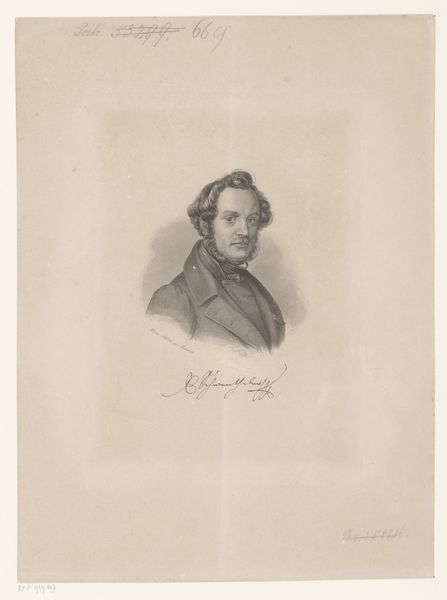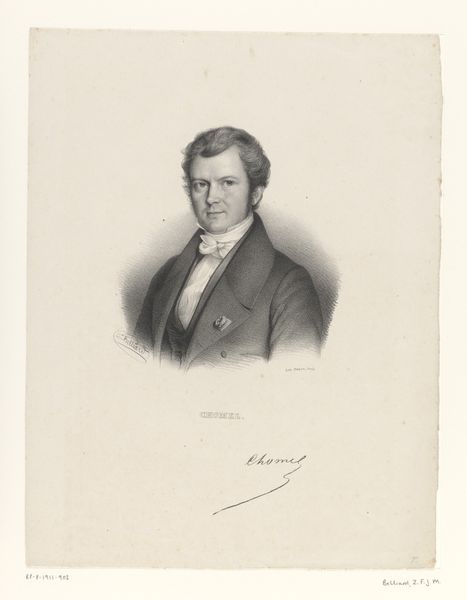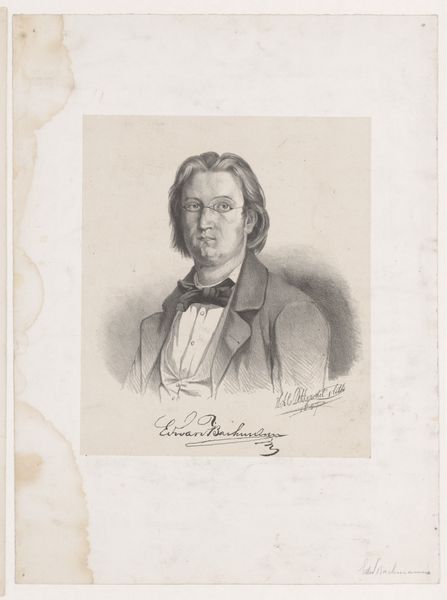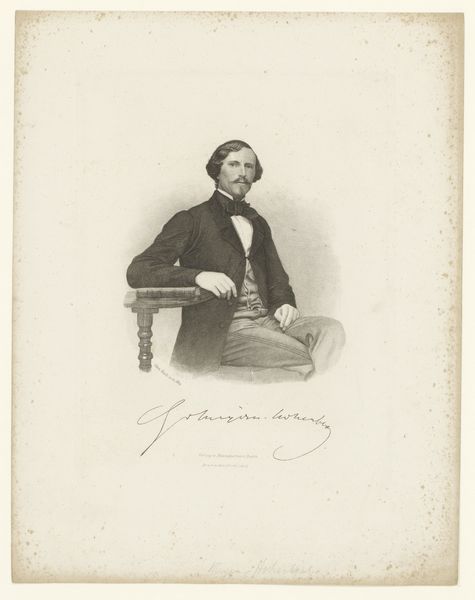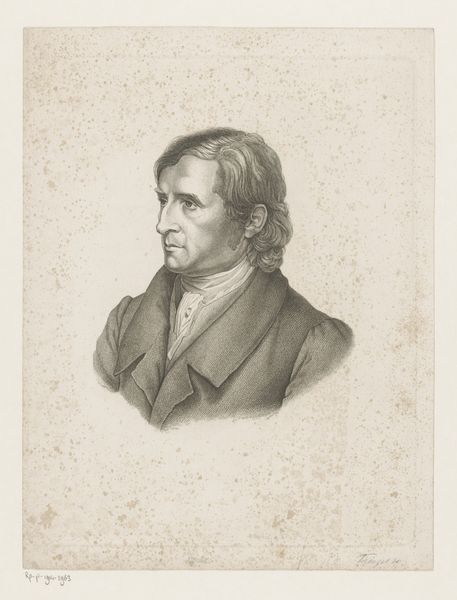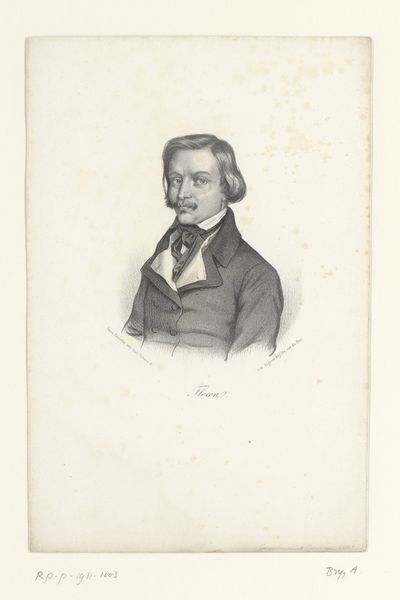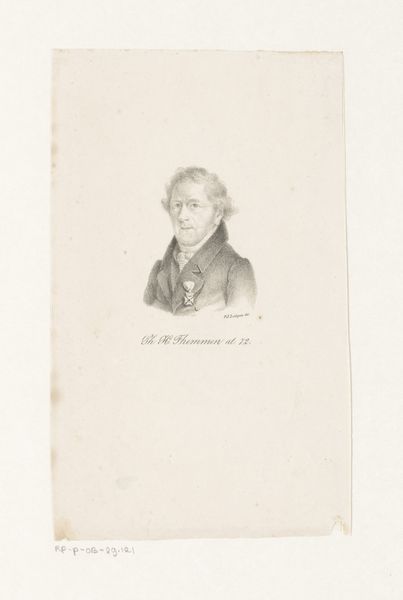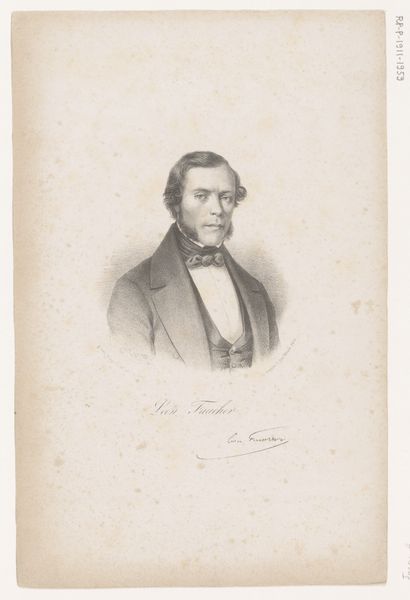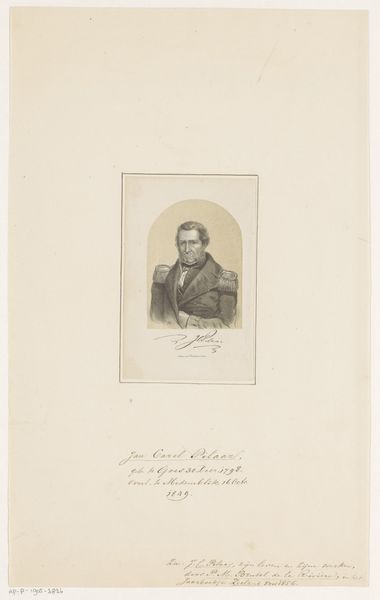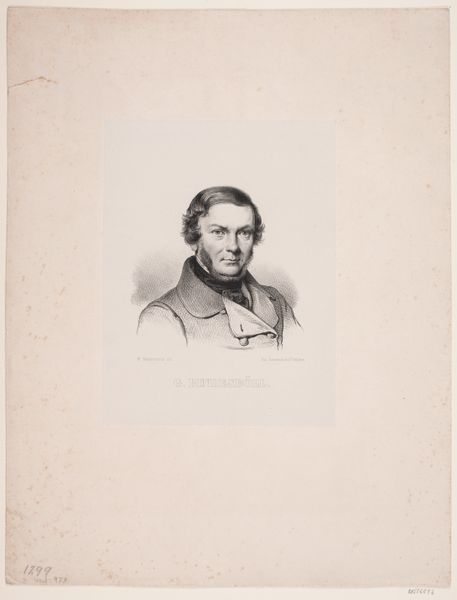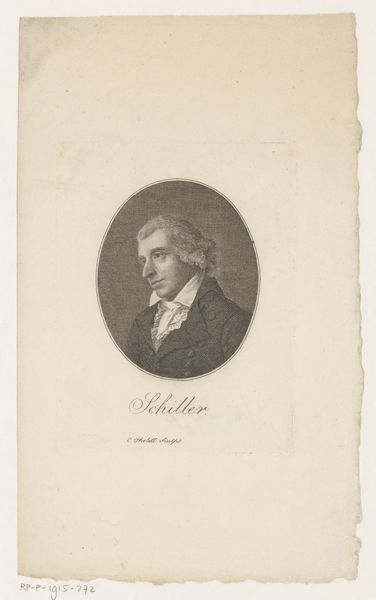
Dimensions: height 139 mm, width 88 mm
Copyright: Rijks Museum: Open Domain
Curator: Immediately, I'm struck by the delicate nature of this print; it's as if a fleeting thought has been captured on paper. Editor: This is a print, an engraving to be exact, titled "Portret van August Heinrich Hoffmann von Fallersleben." Created sometime between 1836 and 1880, it's rendered in pencil and captures the likeness of the noted German poet. He wrote "Das Lied der Deutschen," the national anthem of Germany, a pretty problematic composition given its history. Curator: Problematic indeed. I mean, even within the formal portrait style so typical of its time, the artist captures a certain restless intelligence in his gaze. You can see it even through the monochrome palette, through this somewhat traditional artistic expression of the subject’s bearing. Is it just me or do others pick up on a man burdened by thought, aware of his position, perhaps? Editor: I see it. Note the composition. The stark contrast between the solid darks of his coat and the lightness of the face really draws your eye to that intellectual, troubled expression you mention. The texture achieved through the engraving technique also suggests a layered persona. We must remember semiotics: the marks represent more than surface-level observations; here, those strokes build depth, quite literally and figuratively. Curator: And speaking of depth, it’s crucial to place this image within its historical frame. Hoffmann's political activism and his eventual dismissal from his professorship for his liberal views obviously had an impact. Considering he was literally the people’s poet, one can consider him a proto-revolutionary. In many ways, the portrait seems like a quiet acknowledgement of the tensions he embodied and helped give rise to during that tumultuous era of pre-unification Germany. Editor: So, the aesthetic rendering acts as a visual echo chamber for broader sociopolitical narratives. Curator: Precisely. These weren't just individual anxieties; they mirror the anxieties of a nation on the brink of change. His image, preserved through art, becomes a symbol of that transition. Editor: Looking at it from my angle, what this piece truly captures is the formal essence of a man who seems very conflicted. From your perspective, he embodies societal turmoil. It really seems like we can consider any angle and achieve a meaningful impact when analyzing a subject, right? Curator: Absolutely.
Comments
No comments
Be the first to comment and join the conversation on the ultimate creative platform.
